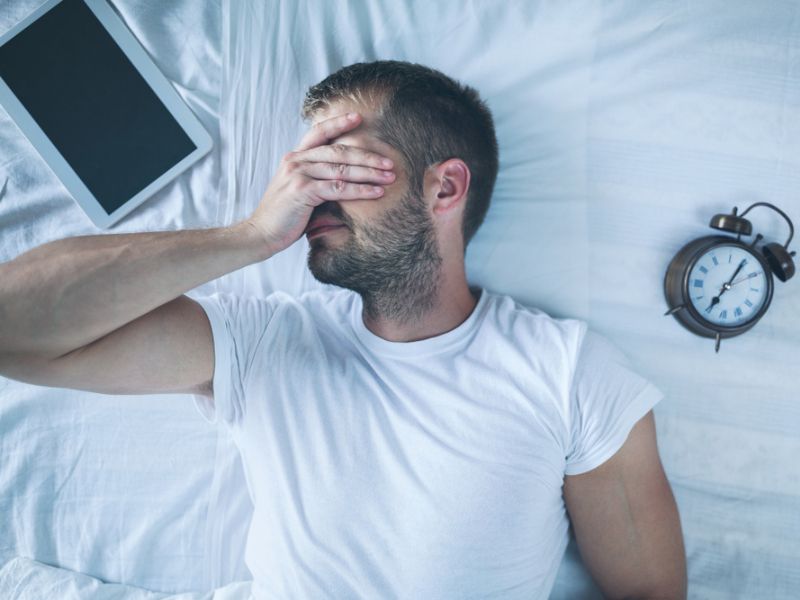Many health effects are linked to daylight savings time, especially the disruption of sleep patterns that can result from time changes.
Dr. Sabra Abbott, a Northwestern Medicine physician and associate professor, told USA TODAY, “It’s the same story every year. Sunlight is highest at noon during standard time, but when we switch to daylight saving time, the relationship between the wall clock and the sun clock is skewed, which can result in lost sleep. Clocks are competing, Abbott said, noting that our bodies follow the sun, not phone screens.”

Image Credit: Shutterstock/fizkes
Are You Having Trouble Sleeping?
Due to dark skies in the morning, most people find it harder to wake up at daylight savings time. The longer the light lasts into the evening, the harder it is for some people to fall asleep.
Dr. Jennifer Martin, the president, told USA TODAY that daylight savings end at this time of year, “our internal clock does not know it’s time to wake up.”
A good night’s sleep is essential. Several studies have shown that insomnia is associated with depression, substance use disorders, cardiovascular disease, and more, including those looking specifically at daylight savings time.
In What Way Does Daylight Saving Time Work?
Daylight saving time is observed in 48 states. If you live in one of those states, your clocks change twice a year. It begins in the spring with clocks shifting forward an hour and ends in the fall. It affects those with sleep issues, such as insomnia, and new parents. Still, it can be an adjustment.
Martin said, “Most of us feel the disruption in the spring when we lose an hour of the nighttime, but even in the fall, as we’re switching back, some people have a hard time adjusting.”

Image Credit: Shutterstock/And-One
How About The Sunshine Protection Act Of 2021?
In March, the U.S. Senate passed the Sunshine Protection Act of 2021. Standard time would be permanent in all states except Arizona, Hawaii, and many U.S. territories.
Many experts reiterate that adopting permanent standard time, not daylight time, is critical from a medical perspective. There have also been attempts by historians and experts to switch to endless daylight savings time before.